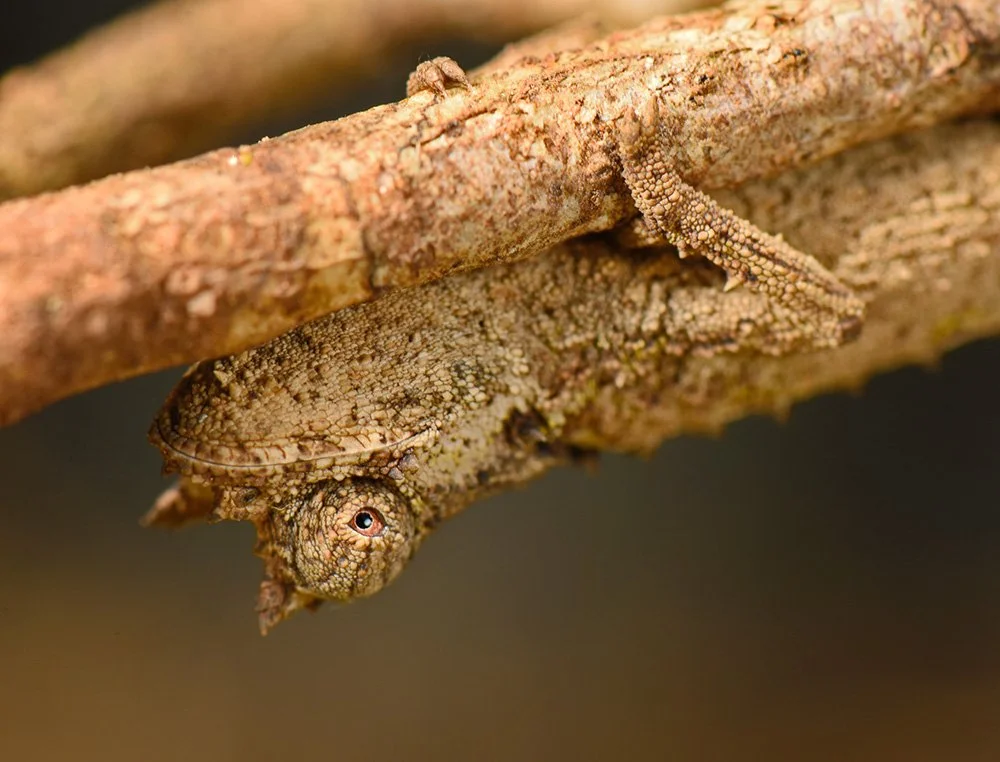Is it a twig or an insect? A harmless moth or a scary owl? Animals have amazing tricks up their sleeves to protect themselves, take advantage of looking like another creature, or look like their environment.
Mimicry and Camouflage: Two Separate Survival Tactics
An example of mimicry is an animal appearing to be a different animal, usually a larger and stronger one, to scare off predators. The pattern on the wings of an Owl Moth (photo above) resembles the eyes and face of an owl.
The King Snake, which is non-poisonous, has a scale pattern like that of the Coral Snake, a type of venomous snake. It tricks predators into thinking they have encountered its very dangerous relative.
Batesian Mimicry and Müllerian Mimicry
Batesian mimicry occurs when a harmless species evolves to imitate the appearance of a harmful or toxic species, gaining protection from predators. A classic example is the viceroy butterfly, which resembles the toxic monarch butterfly, thus deterring potential predators.
Müllerian mimicry involves two or more harmful or unpalatable species evolving to resemble each other. This shared appearance reinforces learned avoidance by predators, increasing the overall effectiveness of the warning signals. For instance, several species of stinging bees and wasps share similar coloration patterns, serving as a collective deterrent to predators.
Animal Camouflage or Cryptic Camouflage
Camouflage is the art of blending into the environment to avoid detection by predators or prey. Typical examples are moths, such as the peppered moth, which looks like tree bark, or walking stick insects that resemble twigs.
Cryptic camouflage is when animals mimic specific elements of their environment, such as texture, color, or pattern. This can be seen in species like the leaf-tailed gecko, which boasts skin textures resembling tree bark, allowing them to blend into their arboreal habitats seamlessly.
The Dead Leaf Katydid is a beautiful example of camouflage. It looks just like the dead leaves it lives on. They range in appearance from a fresh green life to a rotten, decayed leaf.
Color Changing Skills
One of the most amazing examples is the octopus, which can change its color and skin texture to hide in various underwater environments within seconds.
Beneath their skin, octopi have cells called chromatophores. Each is a sac filled with either red, orange, brown, yellow, or black pigment. These can be inflated or deflated as needed.
Chameleons are well known for their ability to change their colors to match their environment.
Concealing Coloration
When an animal’s color matches its surroundings, it is concealing coloration. Examples of this include the polar bear, arctic fox, and a snowshoe hare.
Animals can look like rocks, thorns, twigs, flowers, and bird droppings.
Animal mimicry is found throughout the animal and even plant worlds.
Studying mimicry and camouflage provides valuable insights into evolutionary biology, predator-prey dynamics, and ecosystem interactions. The world of animal mimicry and camouflage is a testament to the ingenuity of evolution.







